|
 





Olympia DG 402
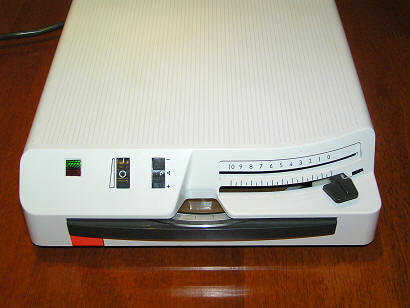
Used Google
translator
Olympia DG 402. This is probably the latest model of the
recorder with recording on magnetic disks. Judging by
the markings on the details it was made in 1974, when
the cassette recorders were no longer a novelty. Of
course this recording format has its advantages, but
nevertheless, the mass production of such a device in
the mid-70s is surprising. Its advantages include the
ability to quickly find the right place of recording and
the ability to send the discs by mail, but you can make
only 10 minutes of recording on such a disc.
The recording technology is similar to the tape
recorder, but the recording is made not on a magnetic
tape, but on a plastic disc with a ferromagnetic
coating, on which there is a spiral groove 0.3 mm wide,
along which the working part of the magnetic head moves.
Probably serial production of the Olympia DG 402 was not
long, and this model is quite rare, but in the previous
decade, these devices were relevant and in demand. The
first such voice recorder was
Telefunken 600, which
began production in 1962. Also in my collection there is
a later and technology model
Assmann TS 10, but they are
all structurally similar.
Interestingly, the microphone from the
Telefunken
600 of the earliest model with a non-standard connector
is fully compatible with the Olympia DG 402 recorder in
the mid-1970s. By the way, this is not just a
microphone, it works both as a speaker and as a remote
control with the functions of turning on the recorder,
turning on the playback, recording, and reversing the
disc, analogue of rewinding. The recorder itself has a
volume control - a recording level combined with a
switch, an electric motor speed regulator, and a red
button for quickly erasing a record from the entire
disc. When this button is pressed above the dial, a
permanent magnet extends to the width of all grooves,
and when the disc is rotated, the disc is erased in a
few seconds.
The device measures 295 x 215 x 68 mm, weighs 3 kg,
is powered from 220 V, 50 Hz, and has a recording
function from the phone. I will add that the plastic
magnetic disks Olympia DG 402 and
Telefunken 600 are the
same, and differ only in marking, in the first case the
inscription "Olympia", in the second case the "Telefunken"
logo. The electronic circuit is assembled on 11
transistors and a TAA511 chip. The amplifier uses 8
transistors BC3198 (5 pcs.), BC239C (1 pc.), BDY34 (1
pc.), And a transistor labeled S122T. The engine speed
regulator uses transistors AC187, BF194, and a
transistor labeled S122T.
The device works fine, and it's really convenient
to use. Especially useful was the function of reverse
rotation of the disc, since this voice recorder was
intended for dictating texts, and the reverse function
was needed to quickly repeat the last words for the
convenience of printing text on a typewriter.
Сервис онлайн-записи на собственном Telegram-боте
Попробуйте сервис онлайн-записи VisitTime на основе вашего собственного Telegram-бота:
— Разгрузит мастера, специалиста или компанию;
— Позволит гибко управлять расписанием и загрузкой;
— Разошлет оповещения о новых услугах или акциях;
— Позволит принять оплату на карту/кошелек/счет;
— Позволит записываться на групповые и персональные посещения;
— Поможет получить от клиента отзывы о визите к вам;
— Включает в себя сервис чаевых.
Для новых пользователей первый месяц бесплатно.
Зарегистрироваться в сервисе
Photos can be enlarged
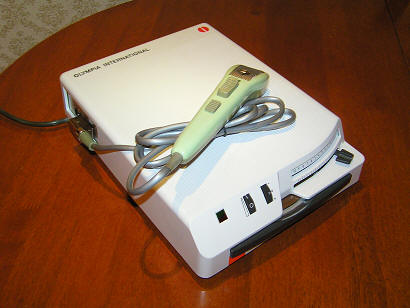
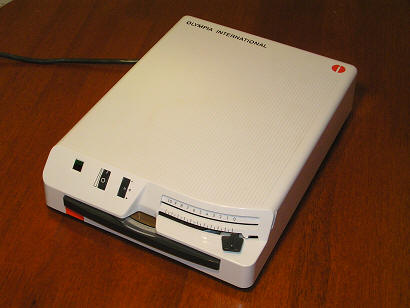 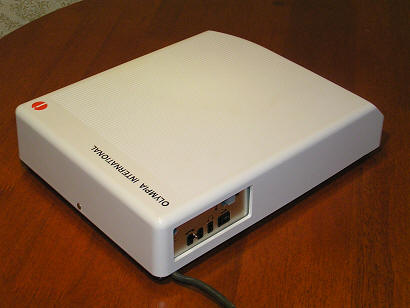
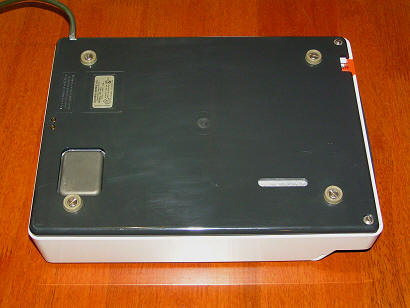 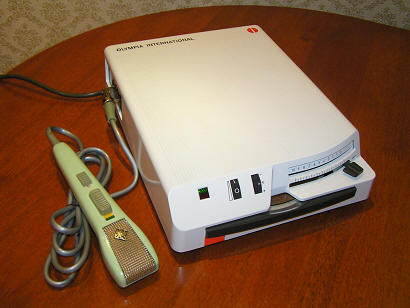
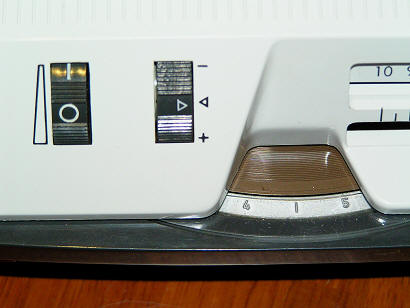
In the kit there is a nice cover, but
unfortunately there is no original microphone. I use a
microphone from a similar voice recorder
Telefunken 600,
they are fully compatible
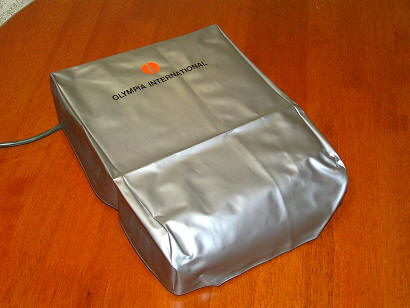
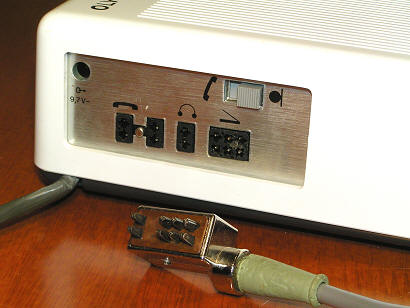 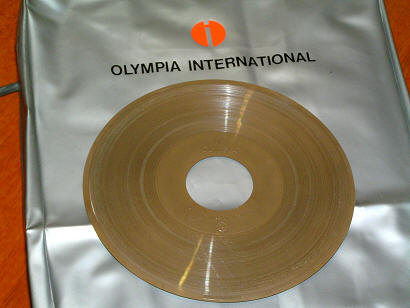
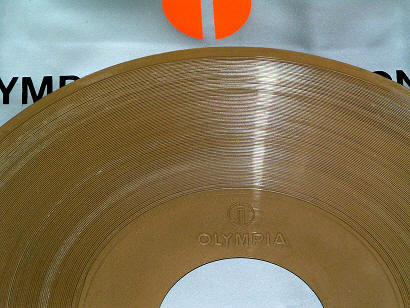
|
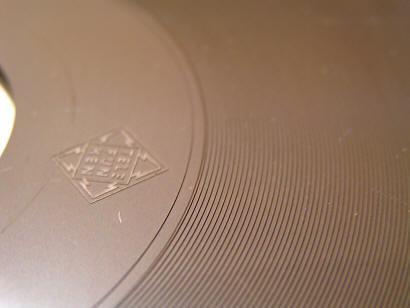 |
|
Magnetic disks Olympia DG 402 and
Telefunken 600 with a diameter of 155 mm are almost identical,
and differ only in marking. In the first case,
the inscription "Olympia", in the second case
the "Telefunken" logo. Telefunken disks also
have two holes, apparently for use in
dictaphones with a different disk fixation. In
these recorders, the disc is fixed on a rotating
table by pressing it down into a hole with a
diameter of 38 mm |
|
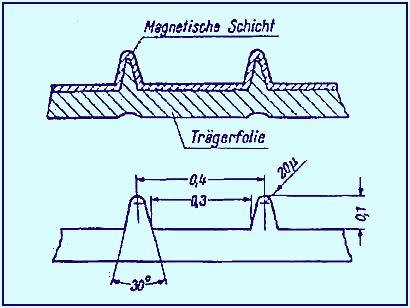 |
|
In the illustration to the left, the parameters
of the groove of the Olympia DG 402,
Telefunken
600, Assmann TS 10 magnetic disk are used. These
discs are also used with the similar Traveller
and Kurier dictaphones manufactured by
Telefunken and AEG, respectively. However, with
the original Assmann TS 10 discs, the diameter
of the hole is different, but the groove
parameters are the same. On the reverse side,
all the disks are black. |
This recorder is made in Germany, like
other similar Telefunken 600 and
Assmann TS 10
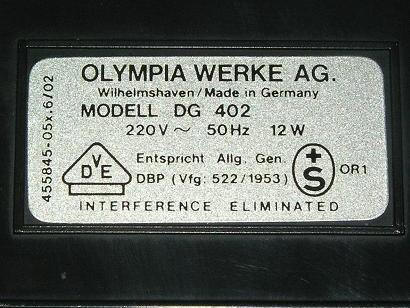
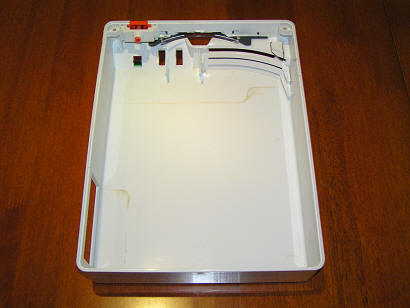 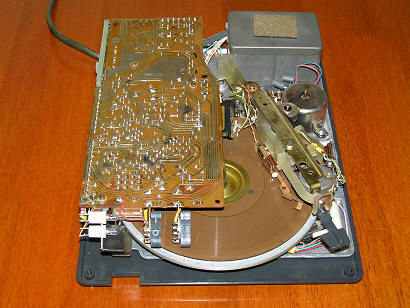
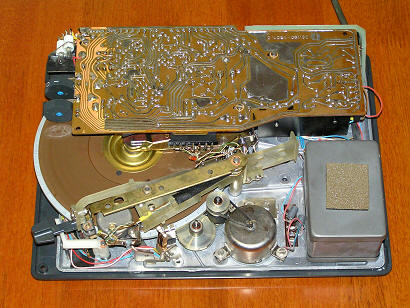 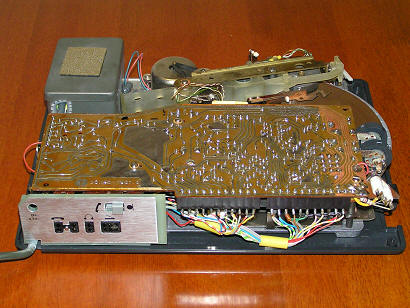
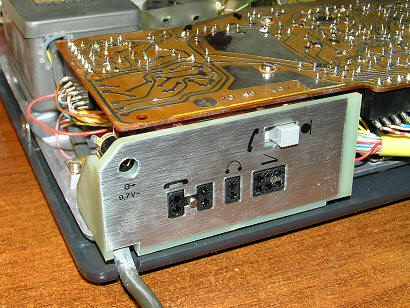
In the photo above, the patch panel with
the "Phone" - "Microphone"
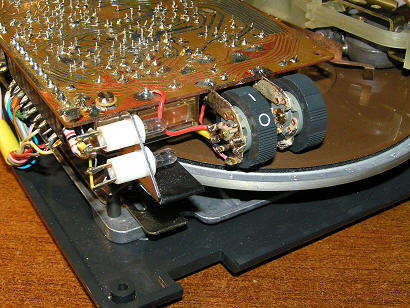
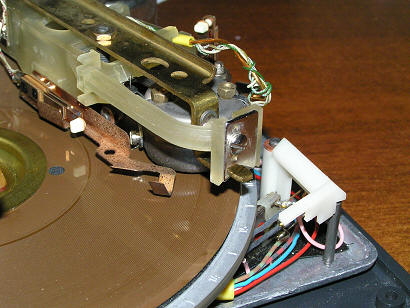 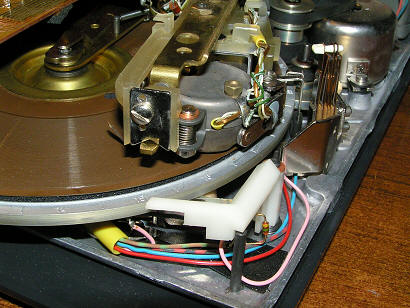
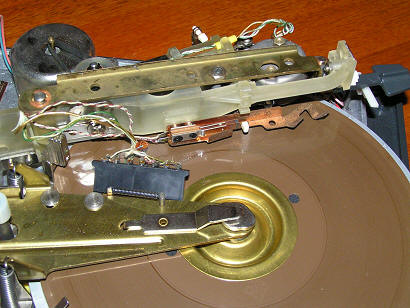 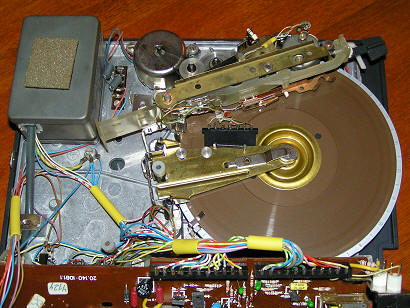
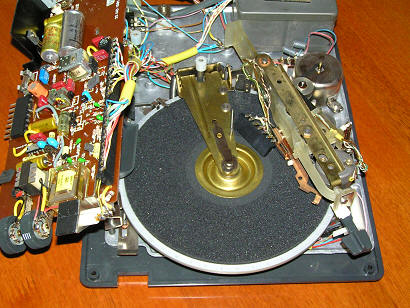
The recording is from the edge to the
center of the disc. When the tone-arm approaches the
center, contacts that include a sound signal are closed.
In the extreme right position, the tone-arm is fixed by a
spring, the contacts of the engine control circuit are
activated, and it stops. To move the tone-arm, you must
press the control knob from top to bottom, while the
head rises above the disc, and you can freely move the
tone-arm to any position. If you move it to the extreme
right of the fixed position, the disc retainer rises and
you can replace it.
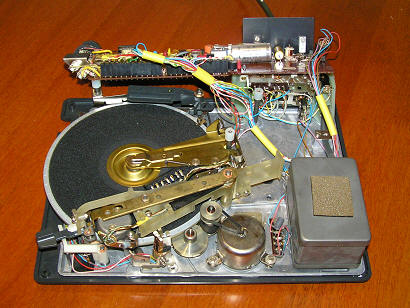
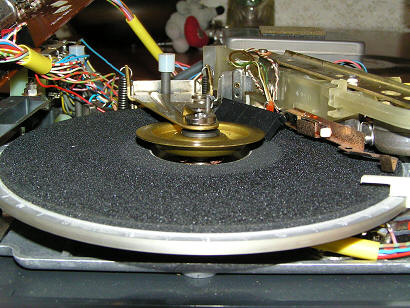 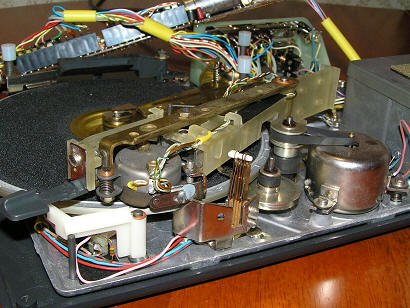
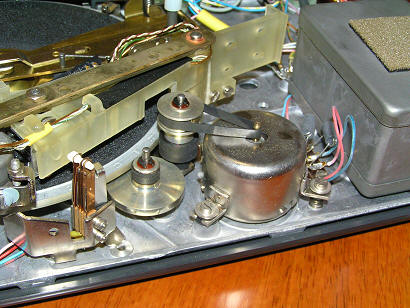
The photo below shows how to quickly
erase information from the disk with the help of a
permanent magnet
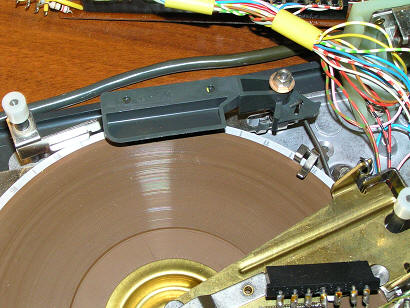
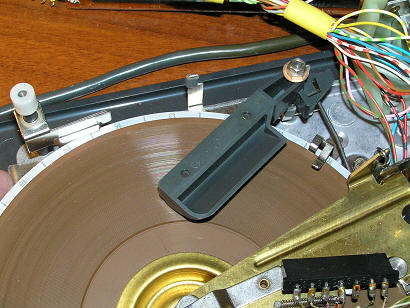
The electronic circuit of the Olympia DG
402 is much more complicated than the
Telefunken 600,
which is assembled with only 5 transistors
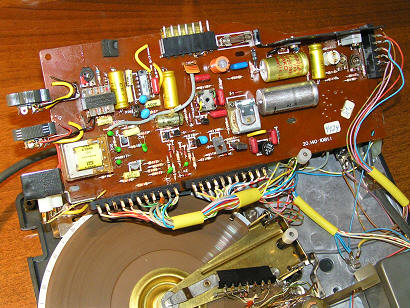
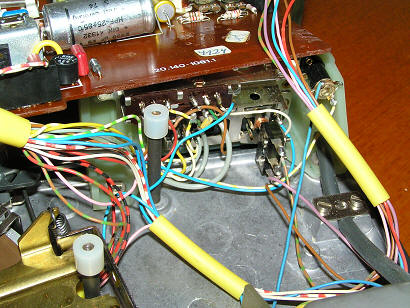 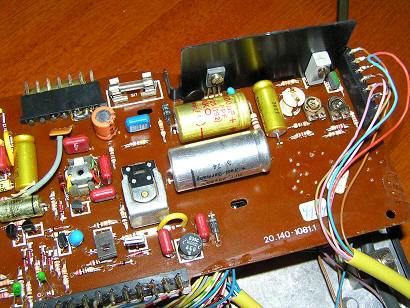
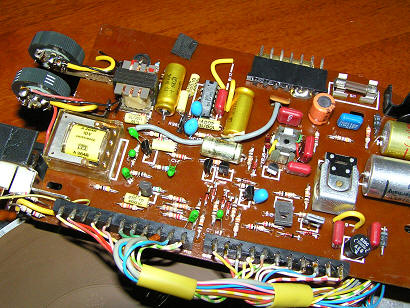
The design of the magnetic head unit is
the same as that of the Telefunken 600. In one case, the
erasing and universal heads are assembled. The width of
the working part is 0.25 mm. Resistance of the universal
head 250 ohms, erasing - 33 Ohm. Details on the
construction can be found on the page
Telefunken 600
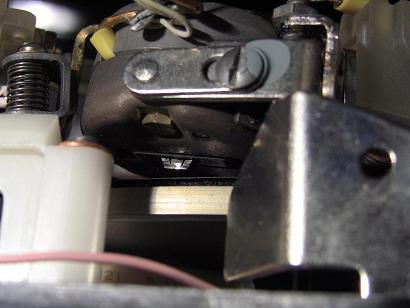
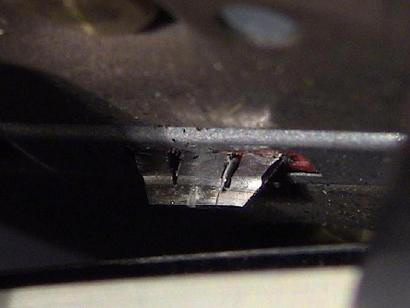 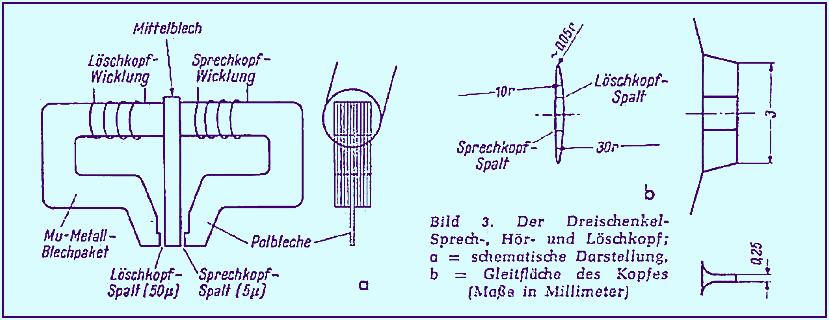
I got the dictaphone in the original
package
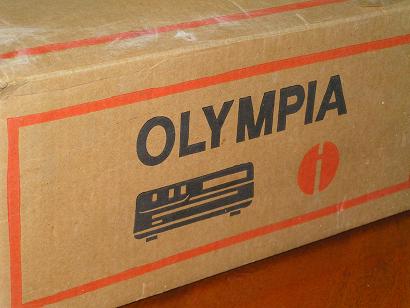
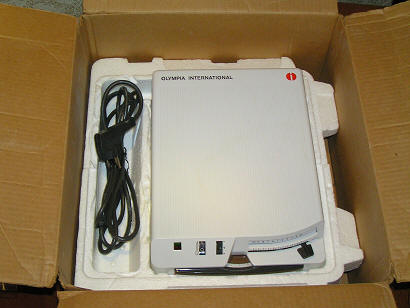


|

![]()
![]()
![]()
![]()
![]()
![]()
![]()








































